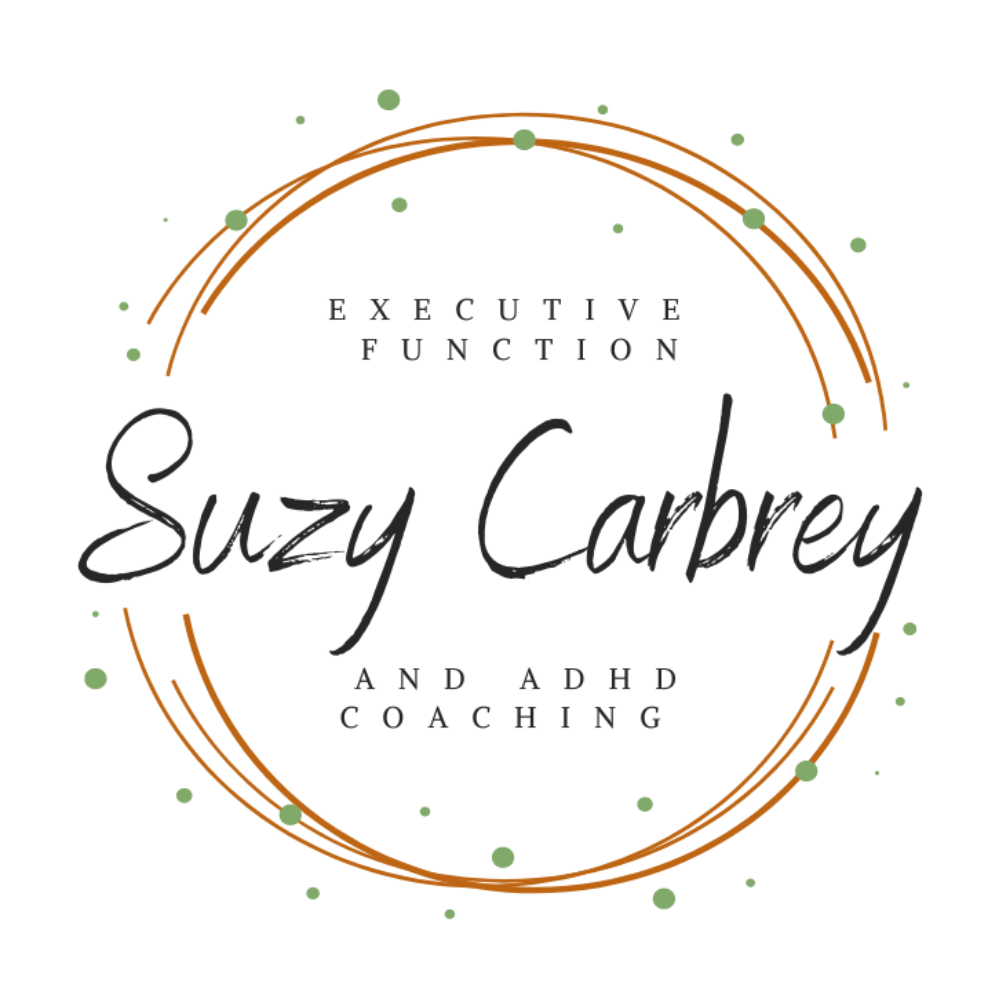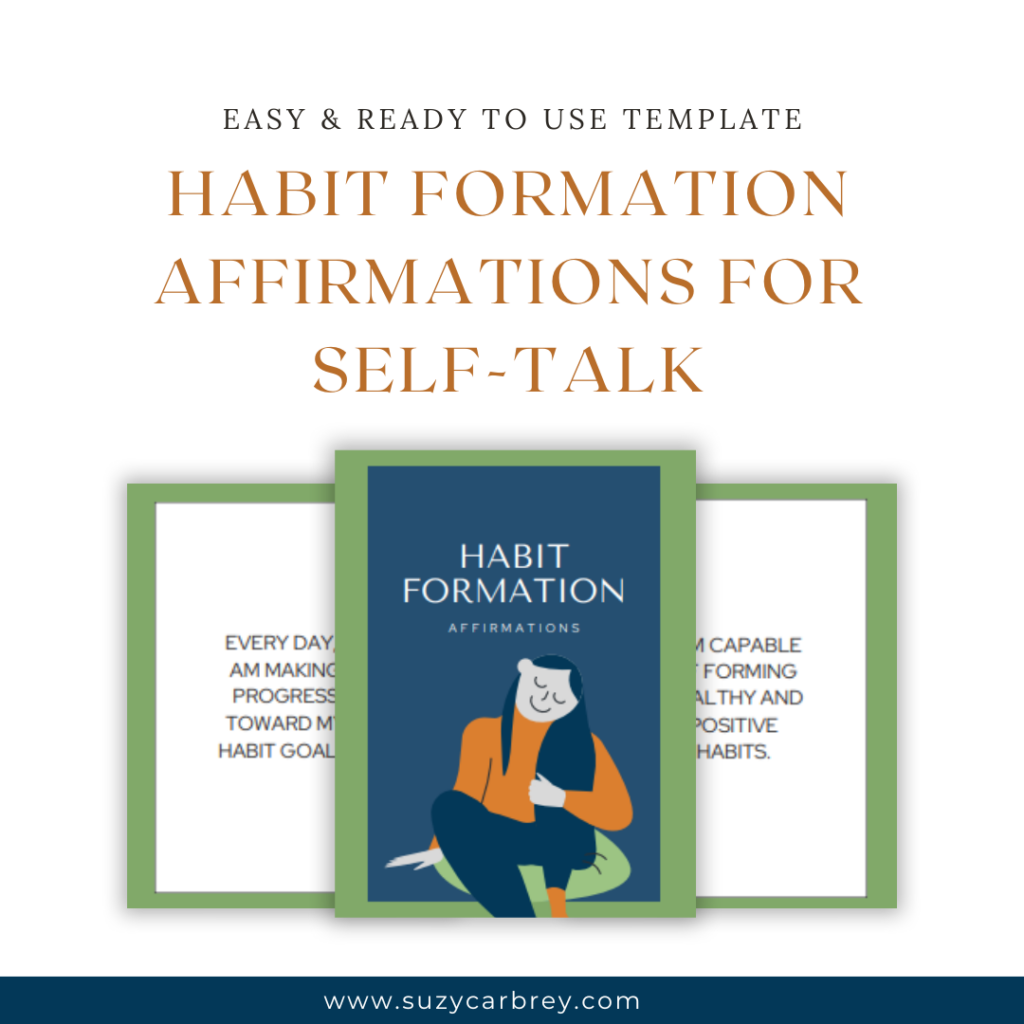If you’ve ever found yourself suddenly folding laundry right before bed, rushing to send a message minutes before a deadline, or finally cleaning the kitchen at midnight, you know the avoidance–urgency cycle.
It starts small. You see something that needs to be done, but it feels boring or unimportant, so you delay it. Then time passes and your energy goes elsewhere. Eventually, the deadline approaches, and adrenaline takes over. Suddenly, you are doing the task in a panic, fueled by stress, guilt, and frustration.
For many adults with ADHD or executive functioning challenges, this pattern feels familiar and exhausting. It is not about laziness or bad habits. It is about how your brain transitions into action.
Why Transitioning to Boring Tasks Feels So Hard
The ADHD brain is interest-based. That means you naturally focus on what feels new, meaningful, or stimulating, rather than what is simply important or expected. When a task is repetitive, predictable, or boring, the brain does not release enough dopamine to help you start.
So you sit there knowing what you should do but not feeling able to begin. Your brain treats the act of starting as a mountain to climb instead of a single step to take.
This is not a flaw. It is a wiring difference that affects how easily you shift from rest to action. The good news is that transitions can be supported. You can learn to ease into boring or mundane tasks before they become urgent by creating the conditions that help your brain engage.
Think of it as learning how to build a bridge between “not yet” and “in motion.” You can do this through gentle, low-pressure experimentation.
The Transition Menu: Experiments for Easing into Boring Tasks
This is not a system or a step-by-step method. It is a menu of experiments. You can pick one or two that sound interesting, or mix and match depending on your day. The goal is to notice what helps you transition into action with less resistance.
Experiment: Make It Smaller
When a task feels big, your brain hesitates. The first step to moving forward is making it smaller and easier to start.

Try these small shifts:
- The two-minute rule: If it takes less than two minutes, do it right now. If it is a bigger task, tell yourself you will just start for two minutes. That small start builds momentum.
- Preview mode: You do not have to commit to doing the thing. Just open the tab, walk into the room, or look at the materials. Looking at it is the first step to doing it.
- Micro-chunking: Break the task down until it feels laughably small. Instead of “do laundry,” try “collect socks.” Instead of “write report,” try “open document.”
Once your brain moves from nothing to something, it is much easier to keep going.
Reflection:
You are not failing to start. You are learning how to make the starting point visible and accessible.
Experiment: Add Novelty and Interest
Your brain loves stimulation and variety. Boring tasks feel hard because there is nothing new to grab your attention. Adding a touch of novelty or sensory interest makes it easier to engage.
Experiment with:
- Changing the setting. Try moving to another room, standing instead of sitting, or working in a new spot.
- Adjusting your sensory input. Play background music, use a sound machine, or light a candle.
- Rotating your environment. Listen to a podcast one day and upbeat music the next. Keep the environment from going stale.
Novelty sparks curiosity. Curiosity helps you transition into focus. These small sensory changes can signal to your brain that something new is happening, even if the task is the same.
Reflection:
The goal is not excitement. It is engagement. A tiny spark of interest can carry you through the first few minutes.
Experiment: Turn It into a Game
The ADHD brain loves feedback and reward. Boring tasks rarely provide either, which is why gamification works so well. Turning a task into a small game gives you instant satisfaction and helps you transition more easily.
Try:
- Timer challenges: Set a 10 or 15-minute timer and see how much you can complete before it rings. Racing the clock activates focus.
- Point systems: Give yourself points for each step. Five points for starting, ten for finishing, twenty for doing it early. Redeem points later for something enjoyable.
- Boss levels: Imagine you are in a game where each chore is a level to beat. The cluttered counter might be a mini-boss. The pile of paperwork could be the final boss.
Gamification gives structure, reward, and humor. It transforms “I have to do this” into “Let’s see how this goes.”
Reflection:
Playfulness is not immaturity. It is one of the most effective tools for ADHD motivation.
Experiment: Boost Dopamine Before You Start
Sometimes, the problem is not the task; it is your dopamine level. If you feel foggy or sluggish, starting will be nearly impossible. Instead of forcing yourself to begin, do something that gently raises your energy first.
Create a dopamine menu of quick actions that help you feel alert or interested. Examples include:
- Going outside for a few minutes of sunlight.
- Dancing or stretching for one song.
- Drinking water or making a cup of tea.
- Petting your dog, texting a friend, or taking three deep breaths.
You do not need a big ritual. You just need a small spark that tells your body and brain, “We are waking up.” Once your energy rises a little, starting feels more possible.
Reflection:
Preparation counts as progress. Boosting your dopamine is part of the transition, not something separate from it.
Experiment: Pair It with Something Enjoyable
When a task is boring, one of the best ways to get yourself started is to attach it to something enjoyable. This is sometimes called temptation bundling. It works because you are borrowing motivation from an activity that already feels rewarding.
Try pairing your boring task with:
- A favorite podcast or playlist.
- A good cup of coffee or tea.
- A cozy candle or comfortable seat.
- Watching a show or listening to an audiobook.
For example, you might sort laundry while watching a series you love, or clear your email inbox while enjoying your morning drink.
You are teaching your brain that boring tasks can coexist with enjoyment, rather than being something you must suffer through.
Reflection:
You are not bribing yourself—you are balancing the stimulation equation.
Experiment: Externalize Your Supports
ADHD brains work best when reminders and structure live outside the mind. External supports make it easier to transition because they reduce the mental load of remembering, deciding, and keeping track.
Consider trying:
- Visual cues: Use sticky notes, dry erase boards, or visible checklists. Seeing the task keeps it on your radar.
- Timers and alarms: Set gentle reminders for transitions between activities.
- Body doubling: Work alongside someone in real time, either in person or virtually. Simply having another person present can help regulate your focus.
- Implementation intentions: Be clear about when and how you will begin. Say, “After breakfast, I’ll sort papers for ten minutes.”
External systems take pressure off your memory and willpower, letting your brain use its energy to do the task instead of fighting resistance.
Reflection:
Support is not weakness. It is scaffolding for success.
Experiment: Reconnect to Meaning
Sometimes what feels boring is actually disconnected. When you cannot see why a task matters, your brain classifies it as low priority. Restoring meaning can make it easier to start.
Ask yourself:
- “Why does this matter to me?”
- “Who benefits when I do this?”
- “What feeling will I have when it’s done?”
Folding laundry might represent creating calm in your home. Paying bills might represent protecting your independence. Tidying your workspace might represent caring for your future self.
When you tie an uninteresting task to something personal, you reconnect effort to purpose.

Reflection:
Meaning makes motion. Even the smallest action can become an act of care when you see its value.
Experiment: Redefine Success
If you wait for the perfect moment or enough motivation, you may never start. Redefining success helps you transition more easily by removing pressure.
Success does not have to mean completion. It can mean initiation.
Try thinking this way:
- Success is opening the document, not finishing the report.
- Success is loading the dishwasher, not cleaning the whole kitchen.
- Success is showing up, not showing perfection.
Every time you begin a task before it becomes urgent, you are rewiring your brain to associate starting with relief instead of panic.
Reflection:
Progress is not measured by productivity—it is measured by self-trust.
Putting Your Menu into Motion
Not every experiment will work every time. Some days you might need novelty. Other days you might need external structure. Some days nothing works until you rest and try again later.
That is part of the process.
The goal is not to be consistent in method—it is to stay curious. When you treat transitions as experiments instead of tests, you give yourself permission to explore instead of judge.
Ask yourself:
- What kind of stuck am I feeling today: overwhelm, boredom, or low energy?
- What might make this just ten percent easier to start?
- Which experiment matches the need right now?
By matching the strategy to the state you are in, you help your brain get traction again.
A Quick Transition Check-In
When you notice yourself avoiding something boring, pause for a moment and use this mini-reflection:
- What is my state right now: am I tired, overstimulated, distracted, or unmotivated?
- What would make this transition gentler?
- Which experiment feels worth testing today?
You do not need to feel ready. You just need to start easing yourself toward motion.
Each small attempt is a practice in self-awareness and flexibility, two essential skills for executive functioning growth.
Key Takeaways
- Transitions are the real challenge. ADHD brains struggle most at the starting line. Learning how to shift from rest to action gently is the key to progress.
- Experiment, do not perfect. You are building a menu of ways to begin, not following a strict formula.
- Shrink the task. Small beginnings like two minutes or one micro-step lower resistance.
- Add novelty and interest. Change your setting, your sound, or your routine to re-engage attention.
- Make it enjoyable. Pair boring tasks with something you genuinely like to do.
- Boost dopamine first. Use small sensory or movement-based activities to raise your activation energy.
- Lean on supports. Use cues, timers, or body doubling to externalize structure.
- Connect to meaning. Reframe tasks as acts of care or values in motion.
- Redefine success. Starting early counts as success, even if you do not finish.
Final Reflection
Breaking free from the avoidance–urgency cycle does not require a complete life overhaul. It starts with understanding that your brain needs different conditions to begin.
Transitioning into boring or mundane tasks before they become urgent is not about forcing discipline. It is about creating enough stimulation, support, and self-compassion to ease into motion.

Each experiment is a way of saying, “I am willing to find what works for me.” You are not failing when one strategy falls flat. You are simply collecting data about your brain.
With practice, these small experiments turn into quiet confidence. You start noticing yourself beginning sooner, stressing less, and trusting your ability to shift states without waiting for panic to push you.
You are not trying to become someone else. You are learning to guide the brain you have—with curiosity, kindness, and a growing sense of control.
Learn more with Online Coaching for Executive Functioning / ADHD
Ready to gain control and enhance your executive functioning? As an experienced and compassionate coach, I specialize in providing support for executive functioning and ADHD. To embark on your journey, please reach out to me at 708-264-2899 or email hello@suzycarbrey.com to schedule a FREE 20-minute discovery call consultation.
With a background as a speech-language pathologist, I have a strong foundation in executive functioning coaching. My graduate degree program in SLP placed a significant emphasis on cognition, including executive functions, and I have years of experience in medical rehabilitation, providing cognitive-communication therapy. Additionally, I have completed an ADHD Services Provider certification program, I am Solutions-Focused Brief Therapy Diamond Level 1 certified and I am trained in the Seeing My Time® executive functioning curriculum.
Experience the convenience and effectiveness of online coaching, backed by studies that demonstrate equal results to in-person services. Parents, professionals, and emerging adults love the convenience and privacy of receiving coaching from their own homes.
Whether you reside in Chicago, Milwaukee, Indianapolis, Kansas City, or anywhere else around the globe, I am here to assist you. Schedule your discovery call consultation today, and I eagerly anticipate the opportunity to work with you!
Please note that although I am a certified speech-language pathologist, all services Suzy Carbrey LLC provides are strictly coaching and do not involve clinical evaluation or treatment services. If you require a formal speech therapy evaluation and treatment, please inform me, and I can provide appropriate recommendations.



Thank you
Your blog is a testament to your dedication to your craft. Your commitment to excellence is evident in every aspect of your writing. Thank you for being such a positive influence in the online community.
Thank you!
Your blog is a testament to your passion for your subject matter. Your enthusiasm is infectious, and it’s clear that you put your heart and soul into every post. Keep up the fantastic work!